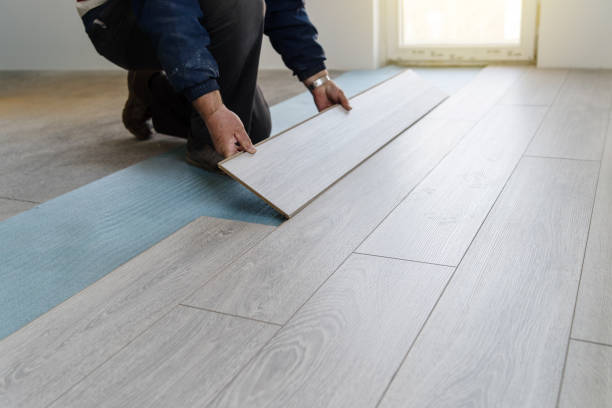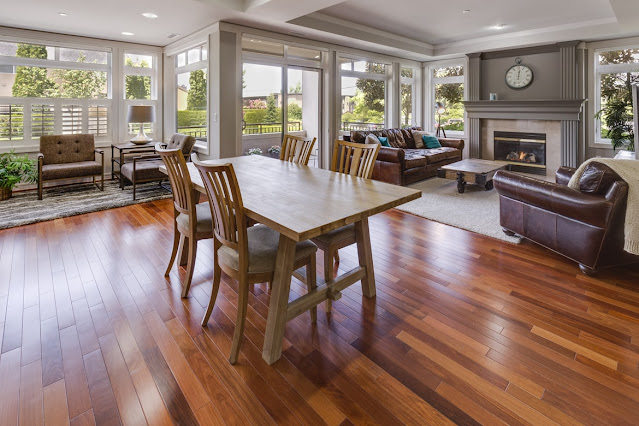Most floor restoration treatments will involve sanding the floor first. However, hardwood has been associated with interruption, clutter, and health risks. Two things must be done before a fresh finish can be applied to wood floors. Floor sanding is typically used for both of these processes. No longer is sanding the floor a necessary step in the restoration process for the average house.
It is now possible to refinish floors without sanding thanks to innovative techniques like the one employed here. Refinishing floors that can't be sanded this way is possible, and you won't have to deal with the wood dust that comes with the process. Read on to know more in detail to have a complete better understanding of sanding floors!
Should You Sand Your Own Floors? Weighing The Pros & Cons:
Advantages of Floor Sanding
Floor sanding is still widely used by professionals who restore hardwood floors. Sanding is one of the most efficient and effective techniques to remove worn-out finishes and prepare hardwood floors for refinishing, but it does have its downsides as well..
Floors that have been severely damaged, such as those with deep scratches or extensive physical damage (such as water damage), are generally best restored by sanding. Floors can have their colour restored after damage from the sun or stains by sanding.
Sanding in these situations removes the damaged layer of hardwood while exposing the good wood below. The flooring will appear nearly brand new after being sanded and refinished. Restoring places where damage has completely pierced the finish layer and reached the timber may be difficult, if not impossible if you refinish floors without sanding.
Changing the colour of a wood floor typically requires sanding as well. After sanding, fresh stain colour may be applied to the wood, and then the wood can be sealed.
Disadvantages of Sanding Floors
The creation of wood dust is the main drawback of floor sanding. Large amounts of wood dust are created while sanding hardwood floors, and it's a real nuisance to clean up. Wood dust is a major contributor to indoor air pollution, which in turn can cause a variety of health issues. Sanding isn't recommended for homes with pets, small children, or those who have respiratory concerns.
In addition, stranded bamboo floors and floors with inadequate wood depth are not sandable forms of wood flooring. This can apply to some engineered floors, deep hand-scraped floors, bevelled floors, and floors that have been sanded several times.
How To Sand A Floor: A Beginner's Guide
Homeowners can select between sanding and our sandless recoating method at one of the local refurbishing businesses. The vast majority of floor refinishing jobs provide a sandless recoating option. This method of floor refinishing eliminates the need for, and the risks associated with, the use of wood dust. It also allows us to restore stranded bamboo, some cork, and deep hand-scraped hardwood floors, all of which cannot be sanded. At last, you can complete your flooring in as little as 1–2 days, with no further drying time required.
As part of our floor restoration offerings, several of our stores also do Floor sanding. To minimize problems caused by wood dust, we employ a specialized sander in our sanding services. Parquet and engineered wood floors, which aren't typically sandable, are also appropriate for our sanders.
Sanding and painting prep
- Make sure there is enough electricity and lights for us to run the Floor sanding equipment. The house's wiring should be energized, not the power box at the construction site. Water is another necessity.
- Everything must go, from the furniture to the staples, tacks, and floor covering. A quote for removing staples, tacks, and smooth edges may be offered, so you can budget accordingly.
- Since polyurethane can leave a lingering odor, you should throw out any perishables that weren't vacuum-packed and put them in a new, sealed container.
- In new kitchens, it's best to wait to install the kickboards until after the rest of the floor is done. It's best to finish the flooring first and then lay new carpet in any rooms where it's being installed.
Conclusion
Following these guidelines will make your wood floor refinishing process a breeze. After all, slipping on a wet surface is much easier than on a dry one.


0 comments:
Post a Comment